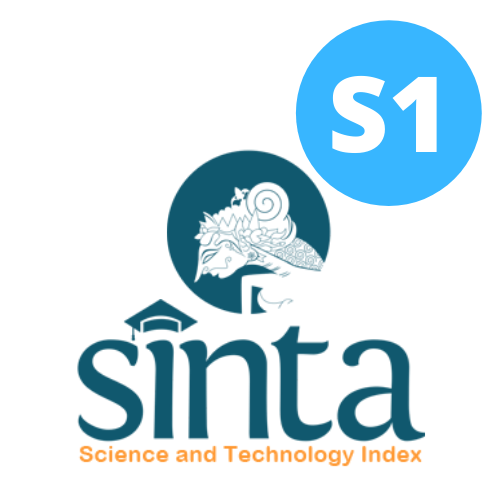Investigating the Impact of Sleep and Nutritional Quality on Hemoglobin Levels in Adolescent Girls: A Cross-Sectional Analysis
Background: iron Deficiency Anaemia (IDA) is a prevalent health issue among female adolescents, driven by poor dietary habits and inadequate sleep. Adolescents face additional challenges due to menstruation and rapid physical development, which increase their vulnerability to anaemia. This study focused on investigating the nutritional intake, diet quality and sleep quality effect haemoglobin levels among female adolescents. Methods: A cross-sectional study was conducted involving 80 female adolescents aged 15-19 years in Ponorogo, Indonesia. Hemoglobin levels were measured using the Easy Touch GCHB device, while sleep quality was assessed through the Pittsburgh Sleep Quality Index (PSQI). Nutritional intake was evaluated using the Semi-Quantitative Food Frequency Questionnaire (SQFFQ), and overall diet quality was measured by the Diet Quality Index (DQI). Data were analyzed with multinomial logistic regression employed to assess the relationships between nutritional intake, sleep quality, and haemoglobin levels. Results: The study found that 50% of participants had normal haemoglobin levels, while 42.5% had mild anaemia and 7.5% had moderate anaemia. The nutritional intake variable was significantly related to decreased Hb levels, and deficient intake increased the odds of mild anaemia (OR = 20.320, p = 0.004). Poor sleep quality also contributed to anaemia, with moderate sleep quality linked to higher odds of anaemia (OR = 22.932, p = 0.013). Conclusion: The interventions focused on improving nutritional intake and quality of sleep among female adolescents are urgently need, regarding the linked association of iron deficiency in this vulnerable group.
Dos Santos, T. T. et al. Gamification as a health education strategy of adolescents at school: Protocol for a systematic review and meta-analysis. PLoS One 18, e0294894 (2023).
Das, J. K. et al. Nutrition in adolescents: physiology, metabolism, and nutritional needs. Ann. N. Y. Acad. Sci. 1393, 21–33 (2017).
Samson, K. L. I., Fischer, J. A. J. & Roche, M. L. Iron status, anemia, and iron interventions and their associations with cognitive and academic performance in adolescents: a systematic review. Nutrients 14, 224 (2022).
Owens, J. et al. Insufficient sleep in adolescents and young adults: an update on causes and consequences. Pediatrics 134, e921--e932 (2014).
Lim, H.-S. et al. Fast food consumption alongside socioeconomic status, stress, exercise, and sleep duration are associated with menstrual irregularities in Korean adolescents: Korea National Health and Nutrition Examination Survey 2009-2013. Asia Pac. J. Clin. Nutr. 27, 1146–1154 (2018).
World Health Organization. Anaemia in Women and Children. (2024).
Kuhn, V. et al. Red blood cell function and dysfunction: redox regulation, nitric oxide metabolism, anemia. Antioxidants & redox Signal. 26, 718–742 (2017).
McWilliams, S. et al. Iron Deficiency and Sleep/Wake Behaviors: A Scoping Review of Clinical Practice Guidelines—How to Overcome the Current Conundrum? Nutrients 16, 2559 (2024).
Shoemaker, M. E., Gillen, Z. M., McKay, B. D., Koehler, K. & Cramer, J. T. High prevalence of poor iron status among 8-to 16-year-old youth athletes: Interactions among biomarkers of iron, dietary intakes, and biological maturity. J. Am. Coll. Nutr. 39, 155–162 (2020).
Khanal, A., Paudel, R., Wagle, C. N., Subedee, S. & Pradhan, P. M. S. Prevalence of anemia and its associated factors among adolescent girls on Weekly Iron Folic Acid supplementation (WIFAS) implemented and non-implemented schools at Tokha municipality, Kathmandu. PLOS Glob. Public Heal. 4, e0002515 (2024).
Sousa, R. da S., Bragança, M. L. B. M., Oliveira, B. R. de, Coelho, C. C. N. da S. & Silva, A. A. M. da. Association between the degree of processing of consumed foods and sleep quality in adolescents. Nutrients 12, 462 (2020).
Arifah, D. A., Diannita, R. & others. Anxiety and Sleep Quality among Medical Workers in Harjono S Hospital. in International Conference on Nursing and Public Health vol. 1 225–230 (2021).
Utomo, R. T. N., Setianingrum, E. L. S., Kareri, D. G. R. & Lada, C. O. The Relationship between Sleep Quality with Hemoglobin Levels and Erythrocyte Index of Medical Students at Universitas Nusa Cendana. East African Sch. J. Med. Sci. 6, 40–48 (2023).
Feriel, J., Tchipeva, D. & Depasse, F. Effects of circadian variation, lifestyle and environment on hematological parameters: A narrative review. Int. J. Lab. Hematol. 43, 917–926 (2021).
Arifah, D. A., Andarini, Y. D. & Diannita, R. Occupational Fatigue Based on Work Shift Among Medical Workers at Harjono S Hospital. J. Ilmu Kesehat. Masy. 10, 199–206 (2019).
Koca, B. & Arkan, G. The relationship between adolescents’ nutrition literacy and food habits, and affecting factors. Public Health Nutr. 24, 717–728 (2021).
Ozkan, A. R., Kucukerdonmez, O. & Kaner, G. Sleep quality and associated factors among adolescents. Rev. Española Nutr. Humana y Dietética 24, 256–267 (2020).
Kumar, S. B., Arnipalli, S. R., Mehta, P., Carrau, S. & Ziouzenkova, O. Iron deficiency anemia: efficacy and limitations of nutritional and comprehensive mitigation strategies. Nutrients 14, 2976 (2022).
Wiafe, M. A., Apprey, C. & Annan, R. A. Patterns of dietary iron intake, iron status, and predictors of haemoglobin levels among early adolescents in a rural Ghanaian district. J. Nutr. Metab. 2020, 3183281 (2020).
Chaudhary, P. & Gupta, R. Effectiveness of nutritional intervention on food and nutrient intake and hemoglobin level of moderately anemic adolescent girls. Indian J. Ecol. 46, 943–948 (2019).
Sunuwar, D. R. et al. Effect of nutrition education on hemoglobin level in pregnant women: A quasi-experimental study. PLoS One 14, e0213982 (2019).
Hur, S., Oh, B., Kim, H. & Kwon, O. Associations of diet quality and sleep quality with obesity. Nutrients 13, 3181 (2021).
Hussein, N. A. & Ouda, M. M. A. Life style risk factors of Iron deficiency Anemia among adolescents’ girls. Int. J. Nurs. Didact. 8, 18–28 (2018).
Paramastri, R. et al. Association between dietary pattern, lifestyle, anthropometric status, and anemia-related biomarkers among adults: a population-based study from 2001 to 2015. Int. J. Environ. Res. Public Health 18, 3438 (2021).
Hu, P. J., Ley, S. H., Bhupathiraju, S. N., Li, Y. & Wang, D. D. Associations of dietary, lifestyle, and sociodemographic factors with iron status in Chinese adults: a cross-sectional study in the China Health and Nutrition Survey. Am. J. Clin. Nutr. 105, 503–512 (2017).
da Silva Lopes, K. et al. Nutrition-specific interventions for preventing and controlling anaemia throughout the life cycle: an overview of systematic reviews. Cochrane Database Syst. Rev. (2021).
Alaliwi, H. A. et al. Nutritional anemia types and management. Egypt. J. Hosp. Med. 31, 1–6 (2018).
Chun, M.-Y., Kim, J. & Kang, J.-S. Relationship between self-reported sleep duration and risk of anemia: data from the korea national health and nutrition examination survey 2016--2017. Int. J. Environ. Res. Public Health 18, 4721 (2021).
Leung, W., Singh, I., McWilliams, S., Stockler, S. & Ipsiroglu, O. S. Iron deficiency and sleep--a scoping review. Sleep Med. Rev. 51, 101274 (2020).
Levitt, H. M. Qualitative generalization, not to the population but to the phenomenon: Reconceptualizing variation in qualitative research. Qual. Psychol. 8, 95 (2021).
Sykes, B. L., Verma, A. & Hancock, B. H. Aligning sampling and case selection in quantitative-qualitative research designs: Establishing generalizability limits in mixed-method studies. Ethnography 19, 227–253 (2018).
Maier, C., Thatcher, J. B., Grover, V. & Dwivedi, Y. K. Cross-sectional research: A critical perspective, use cases, and recommendations for IS research. International Journal of Information Management vol. 70 102625 (2023).
Andreeva, V. A. et al. Comparison of dietary intakes between a large online cohort study (Etude NutriNet-Santé) and a nationally representative cross-sectional study (Etude Nationale Nutrition Santé) in France: addressing the issue of generalizability in e-epidemiology. Am. J. Epidemiol. 184, 660–669 (2016).
Copyright (c) 2025 Amerta Nutrition

This work is licensed under a Creative Commons Attribution-ShareAlike 4.0 International License.
AMERTA NUTR by Unair is licensed under a Creative Commons Attribution-ShareAlike 4.0 International License.
1. The journal allows the author to hold the copyright of the article without restrictions.
2. The journal allows the author(s) to retain publishing rights without restrictions
3. The legal formal aspect of journal publication accessibility refers to Creative Commons Attribution Share-Alike (CC BY-SA).
4. The Creative Commons Attribution Share-Alike (CC BY-SA) license allows re-distribution and re-use of a licensed work on the conditions that the creator is appropriately credited and that any derivative work is made available under "the same, similar or a compatible license”. Other than the conditions mentioned above, the editorial board is not responsible for copyright violation.








































